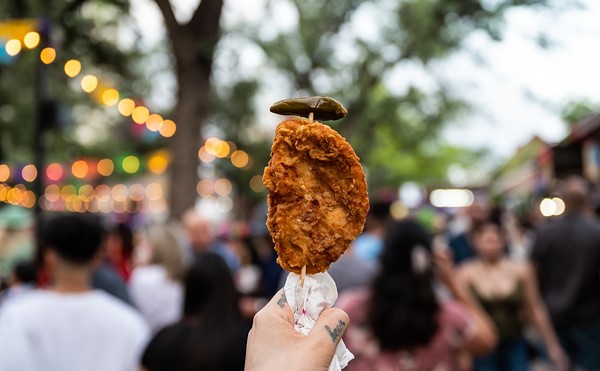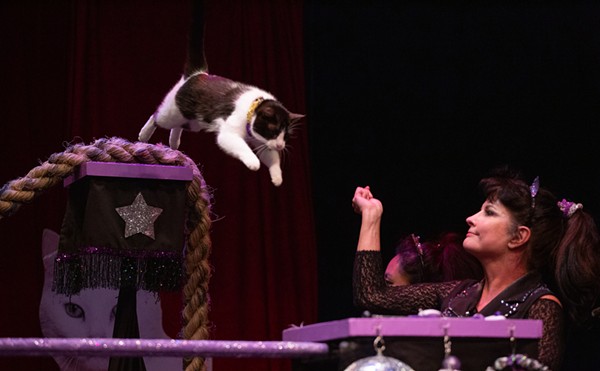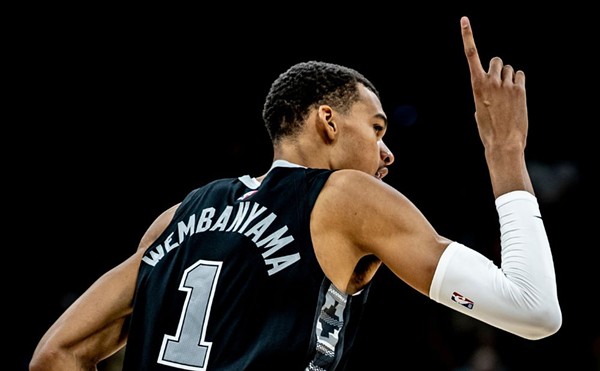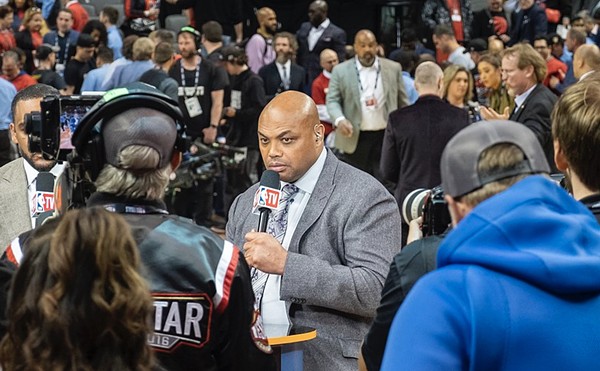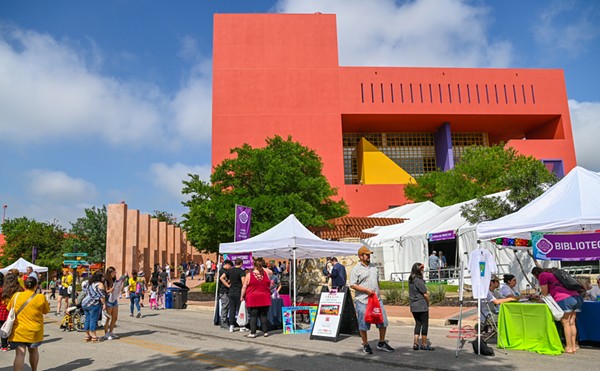Fotoseptiembre, now one of the largest photography festivals in the country, began 17 years ago as an effort to bring photographers from Latin America to exhibit in San Antonio next to local talent, to join North with South. This year it’s also an East/West venture, with works by many Chinese photographers coming to town. But don’t expect to see artists from Beijing or Shanghai in the group. This month SA is hosting photographers from the other China — the Republic of China (ROC), Taiwan.
The Asian arrivals are part of the city’s cultural exchange program, “The Year of Taiwan,” arranged by the Office of Cultural Affairs to celebrate our sister-city relationship with Kaohsiung, Taiwan. The series of art exhibitions begins with Fotoseptiembre, and continues with theater, dance, and “5,000 Years of Jade,” a special exhibition beginning October 1 at the San Antonio Museum of Art. But before that sea of green stone rolls in, catch the SAMA Fotoseptiembre signature exhibition, Animal Instincts: The Photography of Daniel Lee, which opens Friday, September 2. Lee was born in Taiwan but moved to the U.S. to study art, and now resides in NYC. His vibrant, entertaining work uses digital technology to form chimeras, animal/human hybrids that seem to have just walked in from far off lands of fable. Or perhaps, from last night’s giddy dreams.
Other Taiwan-born photographers are part of the festival signature exhibition series; they exhibit at Fotoseptiembre’s main venue, the Instituto Cultural de Mexico at Hemisfair Park, in shows opening Saturday, September 3. Isa Ho’s Fairy Tales depict sexy renditions of feminine role models: princesses, brides, and fantasy-warrior women. Added to the mix are club-vamps and modern soldiers. Pictured alone and in chaotic montage, these self-portraits delight in the camera’s gaze, seem to simultaneously endorse and question cultural assignments. But is this social critique or just role-play glamour? As with the other photography on view at the Instituto, there’s no easy answer. No pamphleteering one-liners here.
Cheng-Chang Wu’s Vision of Taiwan is one of isolation. Loosely playing on traditions of documentary photography, the photos place a solitary male figure among fields or next to stray buildings, his face erased to a bright white spot. Chang Chaotang’s Sightlines contains works from the master photographer’s half-century collection. The black and white photos traverse many styles, and are some of the few photographs presented that do not rely on digital techniques.
Also showing at the Instituto are photographers from France, Canada, Sweden, Mexico, Poland, Peru, and the U.S. Of particular note is Hurricane Story, a photo narrative by New Orleans photographer Jennifer Shaw. Using plastic children’s toys as her models, and lush, deeply saturated swirls of color that dash the backgrounds like torrents of memory or rain, the sequence of 46 images is one of the most ambitious projects in the festival.
Michael Mehl, founder and director of the festival, told the Current last week that Fotoseptiembre is becoming “a woman-based festival.” Many of the artists and organizers this year are women, a peculiar state of affairs in the world of photography, which is still dominated by the male gaze. His collection LookShe at the Instituto presents four female photographers who, like Isa Ho, present the female figure simultaneously as the object of desire and as an aggression-threatening subject, in what Mehl called an “act of self-affirmation.” Nathalie Daoust’s Tokyo Hotel Story documents the S&M scene in Japan; actress Malin Vulcano’s Booby Trap is a response to a suicide bombing in Stockholm: T & A for the 21st century, complete with bomb vest. Dita Kubin presents nudes that deny the viewer with their blurry focus, while Elise Boularan presents unsettling self-portraits that turn the romantic clichés of roses and lingerie into a chronicle of frustration and bewilderment.
MiniSeries III at the Instituto presents works that range from the humorous circus-esque portraits of Chris Sedano to Alex Dorfsman’s digital montages that utilize layers of ripped images to portray consumerism with the brio of fashion photography.
The many artists at the Instituto are only part of Fotoseptiembre, which this year has over 40 official participant venues in SA and the Hill Country. Unlike March’s Contemporary Art Month, Fotoseptiembre USA International Photography Festival is not a casual come-as-you-are event. Though the fest is community based, venues are required to list their shows with the organizers, and the bar for professionalism is high. Those galleries attempting to slip in with the help are likely to receive a letter of cease and desist if they claim affiliation with the fest but don’t play by the rules. The result is a well-organized festival, with many exhibitions and events. Key participants include the Witte Museum, UTSA, Our Lady of The Lake University, and Blue Star Contemporary Art Center. Also in the mix are small private venues like Gallery Nord, and artists’ co-op Hausmann Millworks. But what really sets the endeavor apart is the peculiar space the fest occupies between the two usual ways of presenting lots of art. Consisting entirely of curated exhibition spaces, Fotoseptiembre is not a biennial assembled in a central campus (SA likes its fiestas to happen on an annual basis), and it’s not an art fair, either — no art venders in booths, here. Nor is it a portfolio review, the school-based exhibition many photo-aficionados are familiar with. Most remarkably for art presentation in SA, the festival isn’t a nonprofit event, either.
Asked about curatorial trends this year, Mehl replied, “I really don’t know about photography. I’m a circus ringmaster, that’s what I am.” Mehl went on to explain, “We are not gate-keepers, we are door openers. Artists who are not happy with the festival circuit gravitate to Fotoseptiembre.”
For the most part, the photography is shown in a non-didactic fashion. Though the fest veers away from academic presentations, it is foremost an inclusive event; the Society for Photographic Education South Central Regional Conference makes an appearance in the listings, and there’s a great diversity represented among the exhibitions. Some photographers come from documentary backgrounds, others from the fashion and advertising worlds. While many are photographers first of all, others are artists who use photographic elements in their work, but are not professionally acquainted with the camera.
If you want an introduction to this month of photos, by all means visit the Instituto and catch the SAMA show. But the opening party not to be missed is at the Blue Star Contemporary Art Center on Thursday, September 1. Four shows opening simultaneously include slightly creepy works by Debra Sugerman, abstract ribbons of color by Rodolpho Chaperena, and award winning Carlos Betancourt’s trans-Caribbean jewels. Also opening that night is the retrospective Minimally Baroque, with pieces by SA’s favorite son, Chuck Ramirez, that is sure to bring in the crowds. •
Fotoseptiembre USA SAFOTO International Photography Festival, Sept 1-30, multiple venues in San Antonio and the Texas Hill Country. For more info visit fotoseptiembreusa.com.





